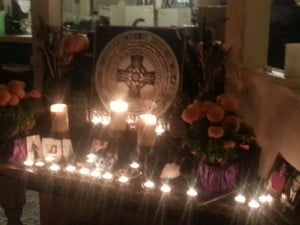Biology arranges all of life in taxonomic ranks based on what are believed to be important similarities. The term mammalia is a class, the class of all mammals. Within this class there are orders, such as primates. Within the order of primates there are families, such as hominids. Within a family there are genuses; if we follow the line leading to us, within the hominid family our genus would be Homo. And within the genus there are species, as in our own narcissistically named Homo Sapiens. Some species have “sub-species,” distinct, usually regional differences between organisms that have no difficulty interbreeding.
The purpose of a good taxonomy is not simply to categorize. The categories must show important relationships. Life forms located within a category must have more in common with one another in important respects than they do with life forms in alternative categories.
All categories reflect a certain model of reality, and other models are possible. Things could be ordered differently. Whales could be lumped with fish in the category of water-dwelling animals instead of being in the category mammalia, which excludes fish. Ants could be lumped with humans as city dwelling organisms, separating them from most insect species and us from other mammals. For certain questions, these alternative groupings make sense.
Biologists tell us their standard taxonomy illuminates much that is useful about biological relationships between organisms. Even so, sometimes they use other categories, such as “social organisms,” which are distinct from the standard taxonomy. They are useful for illustrating and investigating other patterns of importance. Categories arise out of the questions asked. Insightful questions lead to categories that help expand our knowledge in unexpected ways.
I suggest “Pagan” works for us in religious understanding the way “orders” work for us as biological beings. We have the ‘class’ of religion. Within this class are several ‘orders’: Pagan, Abrahamic, Dharmic (or enlightenment-focused), and arguably others. This is the level at which my definition of Paganism applies. One order is distinct from another in that its story is coherent, and differs from other coherent stories.
Within these religious ‘orders’ we have something like ‘families’. Within Paganism, many distinct Pagan groupings share more with one another than they do with other Pagan groups — for example, North American Indian religion, Hellenic religion, and NeoPagan religion. Despite many cultural and linguistic distinctions, Native Americans from the Inuit in the Arctic to the rain forests of the Pacific Coast, the Lakota of the great plains, the Algonquians of the north eastern forests, and many more tribes as well, practiced forms of the vision quest. This pattern is not found elsewhere. But to get at the level of actual practice we need to penetrate more deeply.
Within these ‘families’ we have the equivalent of ‘genuses’. For example, among NeoPagans there are Gardnerian, NROOGD, and Reclaiming ‘genuses’.
Within these ‘genuses’ we have ‘species’, such as “California Gardnerians” and “Hard Gardnerians.” These groups are very aware of their differences as well as their similarities, whereas most other Pagans are neither aware nor much interested in them.
Perhaps Gardnerian sub-species would be lines of descent from particular priestesses: an important issue among Gardnerians and uninteresting to almost everyone else.
And then we have individual groups as members of a species or subspecies, such as the California Gardnerian Coven with whom I celebrate many Sabbats.
This schema offers a reasonable way to organize our understanding of a diverse group of practices around common similarities and evolutionary descent. It helps illuminate interesting questions in a neutral way while simultaneously demonstrating some questions and issues are of little value. Within this framework, asking whether Druids or Voudon practitioners are “more Pagan” than Wiccans is a silly question.
But other questions are interesting and their answers are not obvious. For example, are “reconstructionist” traditions best considered groups that, because they have arisen within modern society, are NeoPagan? Or are they the most recent examples of older Celtic or Norse groups, and so not NeoPagans, but a revived line that extends for thousands of years? Or are they distinct enough to deserve their own classification as a separate family, perhaps a hybrid that becomes a self-sustaining line?
So this schema does not so much answer questions as provide a framework within which interesting questions can be explored and wastes of time avoided.
The same scheme seems to work for Christianity. In the class “religion” there is the “order” of Christianity, the “family” of Western Christianity, the “genus” of Protestantism, the “species” of Lutheranism, with its various sub-species, and then the individual member of a species, a local Lutheran church.
As with “social organisms” contrasted with those that are not social by biologists, different classifications might be important in some contexts. My book Faultlines argues for an important classification cutting across the taxonomic scheme I have just presented: is a religion practiced in hunting and gathering cultures, one significantly transformed by or with its roots in agricultural societies, or one transformed by or with its roots in the modern world? By this categorization some forms of Buddhism, Christianity, Hinduism, and perhaps some forms of Classical Paganism have more in common with each other than they do with NeoPaganism or religions of hunting and gathering societies. Again, categories arise from out of the questions we ask and are only as useful as the issues they illuminate. But most of the time the religious taxonomy I presented above is the most useful.
None of these issues need have any impact on how a Gardnerian or Reconstructionist or any other Pagan group practices; any more than a biological classification need inform hunters how to understand their quarry, farmers their animals, or how animals understand themselves. Nor is it any more important that every member of a Pagan tradition agree with the taxonomy for it to be useful than for every member of an animal species to agree with its taxonomic location by biologists. The framework I have presented is most useful for understanding religions and their relationships from the outside as well as for Pagans or others wishing to better understand how their practices fit into the context of human religion as a whole.
It is time to distinguish the Pagan “order” within the “class” of religions.
Pagan religion defined
I think the inclusive definition of Paganism I offered 13 years ago in Pagans and Christians still works.
I argued there Paganism did not and could not have a precise definition. We had no sacred book, no hierarchical organization with those on top having the final say, nor even a common line of descent. People were involved in Pagan religion from many different cultures over vast spans of time, and in American society they came to it from many different starting points. What was interesting was that amid all this variety there were common themes.
I suggested seeing Paganism as like a rope with many strands, and while at any point along the rope any particular strand might be weak or absent, collectively they described a broad and coherent spiritual outlook that extended back into hunting and gathering times, maintained itself through agricultural societies, and was now emerging into the modern industrial and urban world.
Importantly, these strands are not arbitrary. They share a common spiritual outlook described by the basic story. In more detached terms, they assert the immanence of sacredness in the world as its primary or most immediate manifestation for human beings and offer ways for coming into closer contact and interacting with it. As we do, our lives are in some important way made better. This is Paganism. The strands constitute a rope, not a snarl.
I suggested the core beliefs of Pagan religion, the dominant strands in the rope, were:
1. pantheism or panentheism – The primary focus for Pagans is Spirit as it manifests in and through the world, although it may and often will be thought to have other dimensions that may be the world’s ultimate source.
2. animism – Differentiated consciousness permeates the world. Awareness is not only a quality of existence, it is individuated as distinct entities, at least some of whom are spiritual, that is having aspects not reducible to material phenomena. At least some of these entities are accessible to human contact and interaction. Thus Paganism focuses on our being immersed within a community that goes beyond the purely material.
3. polytheism – Among the spiritual entities appropriately treated as independent beings, some are worthy of being called “gods.” These entities are not identical to purely physical phenomena with which they are sometimes identified or through which they may manifest. They are also in some sense “super human.”
4. The Eternal now – There is a primary emphasis upon spiritual reality’s cyclical and mythical rather than linear or historical character. The point is not that history is an illusion, nor that some events are not characterized by sequences of cause and effect. It is that religiously speaking, these latter qualities are not most fundamental. They occur within a mythic and cyclical context in which life is lived and which gives them a deeper meaning they would otherwise lack.
Because I was writing my book comparing Paganism with Christianity, and the relations between good and evil play a central role in Christian belief, I added a negative characteristic:
5. No good/evil dichotomy – There is no equivalent of a Satan or ultimate evil as an independent spiritual source. Bad things happen. Nasty things are out there. The world, physical and non-physical alike, can kill you. Some people do horrible things to other people. But there is nothing fundamentally bad in it, nothing fundamentally evil.
We do not need trait 5 in our basic definition. It is mostly relevant when comparing Pagans to the Abrahamic religions. I would not have mentioned it in a book contrasting Pagans to Buddhists. However, it emerges from our thinking seriously about the other 4 more central traits. To use the rope analogy, it is a lesser strand than the other four.
These core traits point to the spiritual world as a community of beings who are independent centers of action and attention, and we can relate with at least some of them. Just as ways of relating within human communities are varied, so are ways of relating to spiritual communities. Different communities have different customs, but often members of one community can join another, and often the boundaries between communities can be blurry. No particular concrete practice or community is intrinsically better than the rest. These characteristics describe a pattern of relationships across a wide variety of societies over a span of thousands, arguably tens of thousands, of years.
Christine Kraemer’s new book Seeking the Mystery provides a more recent general definition of Paganism. If our definitions are more than personal statements, we would expect them to agree in all essential respects… And they do. Kraemer includes all the characteristics I raised with the exception of my observation about evil. But she is not comparing Paganism to Christianity, though one could say this point is also implicit for her (ix-xii).
Unlike me, Kraemer also includes “virtue ethics,” a term I knew nothing of when I wrote my book (academically I am a social scientist, not a philosopher or theologian). Virtue ethics deal with appropriate relationships, and I discuss that point in the same way in my book, but as something that emerges from out of the logic of what constitutes Paganism (149-152). If we are part of a community, some ways of relating are more appropriate than others. To my mind, nowhere do we disagree, even though we wrote in large part for different audiences and use different vocabularies, and I gather she arrived at her thoughts separately from how I arrived at mine. If people arrive at the same conclusions by different routes, that strengthens the argument their conclusions are valid.
There are two additional reasons why this definition is a good and useful one: history and interfaith work. Individually, each makes a strong case for Pagan religion as an encompassing category of great breadth, and collectively they help make what is for me an overwhelming case.















